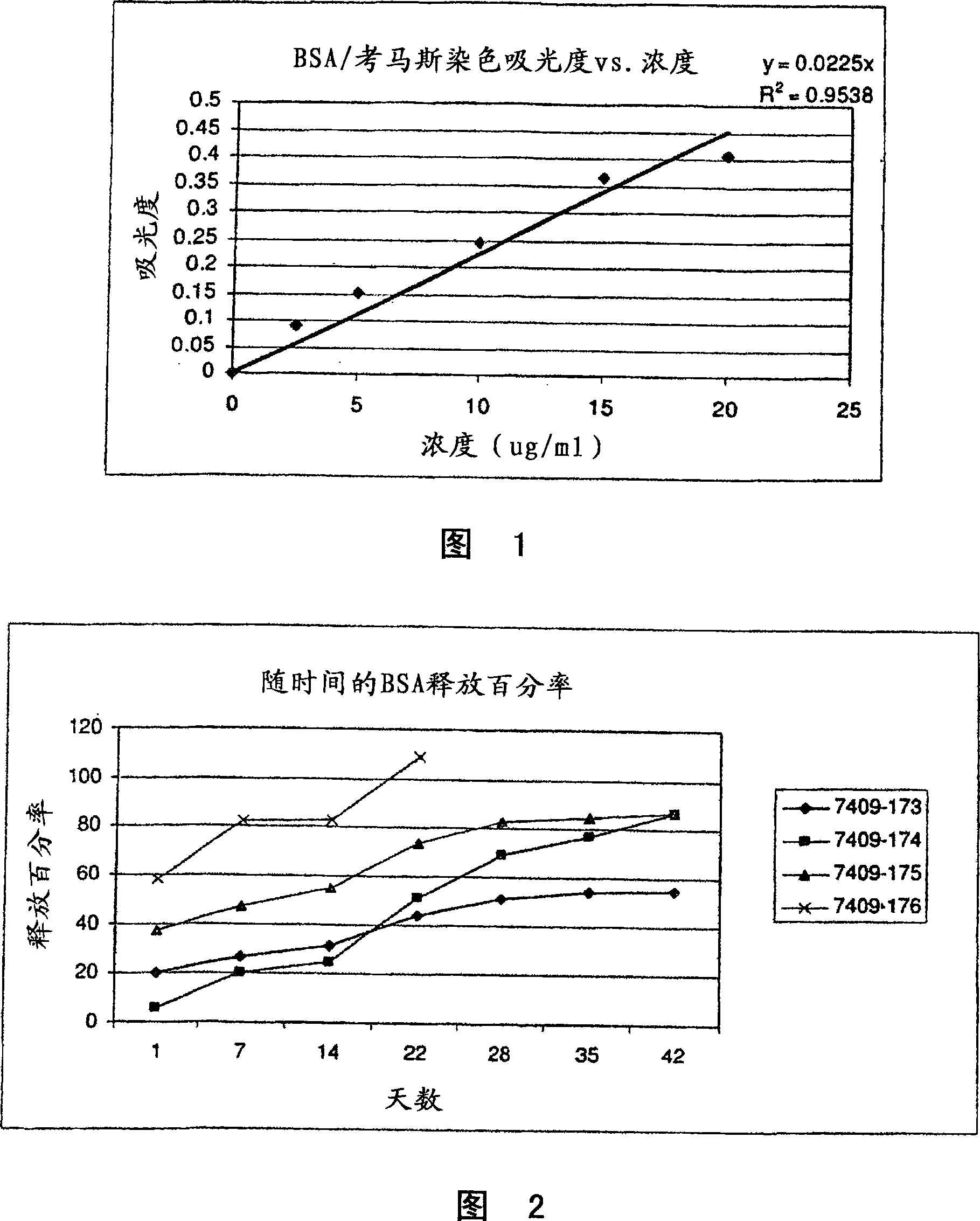Macromolecule-containing sustained release intraocular implants and related methods
A technology of sustained release and macromolecules, applied in the directions of medical preparations containing active ingredients, non-active ingredients of polymer compounds, medical preparations of non-active ingredients, etc.
- Summary
- Abstract
- Description
- Claims
- Application Information
AI Technical Summary
Problems solved by technology
Method used
Image
Examples
Embodiment 1
[0144] Production and testing of implants containing therapeutic agents and biodegradable polymer matrix
[0145] The biodegradable implant is prepared by combining a therapeutic agent such as the above-mentioned agent with a biodegradable polymer composition in a stainless steel mortar. The composition was mixed with a Turbula shaker at 96 RPM for 15 minutes. Scrape the powder mixture from the wall of the mortar and mix for another 15 minutes. The mixed powder mixture is heated to a semi-molten state for a total of 30 minutes at a specific temperature to form a polymer / drug melt.
[0146] The rod formulation is prepared by the following method: the polymer / drug melt is made into pellets with a No. 9 polytetrafluoroethylene (PTFE) metering tube, the pellets are filled into a cylinder, and the material is extruded at a specific core extrusion temperature Into filaments. The filaments are then cut into approximately 1 mg size implants or drug delivery systems. The size of the rod ...
Embodiment 2
[0152] Treatment of eye diseases with intraocular implants with anti-inflammatory agents
[0153] Controlled release drug delivery systems can be used to treat eye diseases. The system may contain steroids such as anti-inflammatory steroids such as dexamethasone as the active agent. Alternatively, the active agent may be a non-steroidal anti-inflammatory drug, such as ketorolac (available from Allergen, Irvine, California, in the form of a ketorolac tromethamine ophthalmic solution, trade name Acular). Therefore, for example, the dexamethasone or ketorolac extended release implant system prepared according to Example 1 can be implanted into the eye area or location (ie, intravitreal) of patients with ocular diseases to obtain the desired therapeutic effect. The eye disease may be inflammation such as uveitis, or the patient may suffer from one or more of the following diseases: macular degeneration (including non-exudative age-related macular degeneration and exudative age-relat...
Embodiment 3
[0155] Preparation and therapeutic application of anti-angiogenesis extended release implant
[0156] The implant for treating eye diseases according to the present invention may contain a steroid such as an anti-angiogenic steroid such as anecort as an active agent. Therefore, the method of Example 1 can be used to prepare a biodegradable implant system for prolonged delivery of anecortacetate (an angiogenesis-inhibiting steroid). The one or more implants can load a total of about 15 mg of Anecort.
[0157] The anecortamine acetate extended-release implant system can be implanted into the eye area or location (i.e., intravitreal) of patients with eye diseases to obtain the desired therapeutic effect. The eye disease may be an angiogenic disease or inflammation such as uveitis, or the patient may suffer from one or more of the following diseases: macular degeneration (including non-exudative age-related macular degeneration and exudative age-related macular degeneration) ; Choro...
PUM
| Property | Measurement | Unit |
|---|---|---|
| Diameter | aaaaa | aaaaa |
| Thickness | aaaaa | aaaaa |
Abstract
Description
Claims
Application Information
 Login to View More
Login to View More - R&D
- Intellectual Property
- Life Sciences
- Materials
- Tech Scout
- Unparalleled Data Quality
- Higher Quality Content
- 60% Fewer Hallucinations
Browse by: Latest US Patents, China's latest patents, Technical Efficacy Thesaurus, Application Domain, Technology Topic, Popular Technical Reports.
© 2025 PatSnap. All rights reserved.Legal|Privacy policy|Modern Slavery Act Transparency Statement|Sitemap|About US| Contact US: help@patsnap.com



